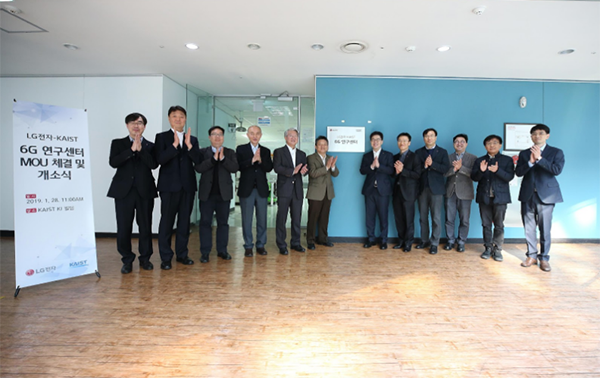As fifth-generation mobile communication technology is being commercialized in Korea, the communication & energy team of the IT Convergence Research Institute is conducting original research on B5G (beyond 5G) and 6G mobile communication technology. In fifth-generation mobile communication, the 3.5 GHz band and the 28 GHz band have been distributed to the communication service providers in the domestic market. In particular, the millimeter band such as 28 GHz is expected to maximize the spatial gain by utilizing a large number of beams. In order to form a beam, a commercial system is constructed based on hybrid beamforming, which forms a beam using analog elements and simultaneously performs digital signal processing. When the number of beams increases, the complexity of the system can be greatly increased due to the linear increase of the number of analog beamforming modules, where the analog beamforming circuit is configured for each beam. In order to overcome this problem, we are proceeding with the task of full digital beamforming. The millimeter band uses hundreds of antennas, so we can configure full digital beamforming using an analog-to-digital converter (ADC) and digital-to-analog converter (DAC) with only 3 to 4 bit resolution, instead of the current 12 bit resolution.
Meanwhile, 6G mobile communication technology is under study to utilize frequencies of several hundred GHz, or more than THz. In the area close to THz, there is competition between technologies based on electronic devices and those based on optical devices. At 300 GHz, since the wave length is only 1 mm, it is possible to integrate many antennas even in a small size, which can increase the beamforming gain. Moreover, it is possible to increase the capacity by forming a spatial multi-mode in the beam. The capacity can increase in proportion to the number of spatial multiple modes. In the 28 GHz band, the antenna size for obtaining the spatial multi-mode gain is several meters in a communication link of 100 m. However, it can be reduced to several tens of centimeters or less in the hundreds of GHz band of the sixth generation, and the utility for securing the gain can be increased. The communication & energy team of the IT Convergence Research Institute opened the LG Electronics-KAIST 6G Research Center in January 2019 and started research to prepare for the period of the future ten years from now.


KI Fellow Lee, Ju Yong KAIST Institute for IT Convergence, KAIST (Communication & Energy Team)
E-mail: jylee@itc.kaist.ac.kr






